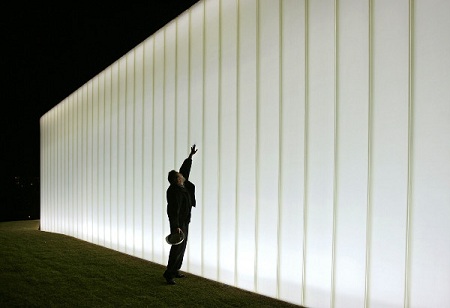Glass is one of the few construction materials that adds to the visual attractiveness and physical comfort of a structure in so many ways. This adaptable material is a crucial component in an architect's arsenal, whether the design aims are striking colors, broad vistas, excellent performance, or all of the above. Architectural glass may take center stage or give a nearly clear canvas while working in the background to assist in the conceptualizing, design, and construction of tomorrow's distinctive buildings as the use of architectural glass increases and evolves.
“Glass truly has become symbolic of communication and openness in architecture today. Combining technological advantages with glass, designers have plunged forward to experiment with its various facets,” says Rajiv Milkha Singh, Regional Manager Distribution of the Saint-Gobain Glass India Ltd.
In this article, let’s track the evolving role of glass as a construction equipment and identify the latest glass trends that are sought to increase the usability of it in the days to come.
Energy-Efficient Switchable Smart Glass
Architecture and construction are two areas that have embraced smart glass quickly. Adjustable smart glass has several advantages in both residential and commercial structures. Decreasing the amount of UV and sunlight that enters a building keeps it colder, reducing the demand for air conditioning and conserving energy and carbon emissions.
Blocking the sun's glare not only makes inhabitants more comfortable, but it also protects furniture, textiles, and items from long-term harm. Smart-glass sunroofs, for example, serve museums by providing brilliant, natural light ideal for viewing artwork while reducing glare and harmful UV radiation. Smart glass may be used for internal doors and partitions as well as exterior windows and doors to give privacy and rapidly modify a place while taking up less space.
Switchable smart glass can save commercial building owners up to 30 percent in energy costs, allowing users to adjust the amount of light and heat that enters their building or rapidly turning opaque for privacy. Notably, the electrochromic smart glass market may reach $3.75 billion by 2026.
“Aside from the obvious reduction in energy costs from limiting the use of electrical lighting, automatic shading and design in glass curtain walls help reduce the load on a building’s HVAC unit, further reducing energy use and costs,” points Catelyn Herman, senior product manager, Glass Solutions, Assa Abloy.
Low E High Performance glass
Low emissivity glass, sometimes called low e glass, provides superior thermal insulation. The glass is coated with a unique coating that enables only visible light to enter the room, protecting it from UV and infrared radiation. This coating, also known as low e coating, provides thermal insulation to the glass. Low-e glass prevents energy transmission by acting as a barrier between the inside and outside temperatures.
The low e coating helps to manage the temperature of the interior by reflecting energy waves back into the space. Low-e glass reflects heat back into the rooms in the winter, preventing it from escaping through the windows. As a result, the house's heating system is relieved of the need to maintain a steady temperature, cutting energy costs.
Low-e glass also blocks the majority of infrared radiation, lowering the amount of heat that enters the structure during the summer. As a consequence, the interiors stay cooler in the summer and the cost of air conditioning is reduced. Commercial buildings, skyscrapers, and glass facades, among other things, frequently use them.
“Many commercial buildings are using Low-E IG units or IG units of Low-E glass filled with argon which provide only R-3 or R-4 performance. It’s almost like leaving the windows open. To save energy, builders are turning to the latest technologies: digital addressable lighting interface lighting controls, underfloor air distribution systems, HVAC controls, smart grid technology and more,” says Glenn MacEachern of ECO Insulating Glass.
Jumbo Glass replacing Traditional Glass
Large glass continues to be a major product trend, as the material expands on the building envelope. Unmistakably, there have been design trends toward more glass, larger glass, and transparent glass throughout the previous decade.
Larger glass has become essential to a building's visual appeal due to its widespread use. Large expanses of glass providing for clear views, integrated into the building design, on the façade or in the inside, are becoming more popular. Glass, rather than a closed-off, segmented structure, produces a more welcoming environment.
“We’re continuing to see increasing demand for high-performance glass. Building codes are getting more stringent, demanding lower and lower U-factors,” says Larry Johnson, vice president of sales, North American Fenestration, Quanex Building Products.
Looking Ahead
Today, glass has evolved as a popular choice because of its clarity, robustness, and exquisite appearance. As a result, it has become a common building material in construction. It is essential throughout the construction process, whether it is a commercial or residential project.
In the future glass will be increasingly used as a more functional element integrated with other technologies and building automation systems. Switchable glazing, glass with LED interlayers, and more examples come to mind. Glass with passive fire protection performance will also find new uses to complement the visual impression of transparent interiors, in addition to these criteria.
